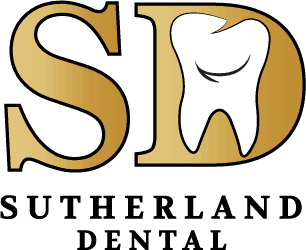Pain management is key after a tooth extraction. Remember, thorough aftercare is essential for a successful recovery.
What to Do After a Tooth Extraction?
Following a tooth extraction, it’s important to promote healing and prevent infection. To do this, avoid rinsing or spitting for 24 hours to avoid disturbing the clot. Reduce swelling with ice packs for the first two days. Manage pain with medication as directed by your dentist. Stay hydrated with fluids but avoid carbonation. For the rest of the day, elevate your head and get plenty of rest. After 24 hours, stick to soft foods that are easy to chew and swallow.
Pain Management
Following a tooth extraction, effective pain management is crucial to ensure optimal healing and comfort for the patient. Pain and discomfort are common after the procedure, but proper medication can help alleviate these symptoms. Patients are typically advised to take over-the-counter pain relievers such as ibuprofen or acetaminophen as their dentist prescribes. Following the prescribed dosage and frequency is essential to manage pain effectively.
While some degree of swelling and bleeding is normal during the initial stages of recovery, excessive bleeding or swelling could indicate complications. Patients should contact their dentist promptly in case of persistent bleeding or swelling. Maintaining good oral hygiene can also help prevent infection and promote healing. Patients should avoid smoking, vigorous rinsing, or touching the extraction site with their tongue or fingers to reduce the risk of complications.
Swelling Reduction
Efficient management of swelling post-tooth extraction contributes significantly to the patient’s comfort and expedited healing process. Swelling is common after tooth extraction and can be reduced by applying cold therapy. For the first 24 hours post-extraction, apply an ice pack wrapped in a thin cloth to the external area of the extraction site for 10 minutes on, then 10 minutes off.
This cold therapy helps constrict blood vessels, reducing blood flow to the swollen area and minimising inflammation. Also, gently applying pressure to the swollen area with a cold compress can help alleviate pain and reduce swelling. To prevent ice burns, it is crucial to avoid applying ice directly to the skin. By diligently following these steps, patients can effectively manage swelling, promote healing, and enhance their post-tooth extraction recovery experience.
Oral Hygiene
Proper oral hygiene ensures a smooth and successful recovery following a tooth extraction. After the procedure, following your dentist’s instructions carefully is important to promote healing and prevent complications.
To maintain oral hygiene after a tooth extraction, gently brush your teeth twice daily, being cautious around the extraction site. Use a soft-bristled toothbrush to clean your teeth and gums without irritating the extraction site. Avoid rinsing your mouth vigorously during the first 24 hours, but after that, rinse gently with warm salt water to keep the area clean and reduce bacteria.
Keep the extraction site clean to prevent infection. Change the gauze over the extraction site as instructed by your dentist to help control bleeding and protect the area. Be mindful not to disturb the blood clot in the socket, as this is crucial for proper healing. Following these oral hygiene practices will aid in a faster recovery and minimise discomfort post-extraction.
Diet Recommendations
Adhere to specific dietary recommendations after undergoing a tooth extraction to aid in the healing process and minimize discomfort. During the initial stages of recovery, follow a post-operative diet that focuses on soft foods and liquids. Opt for nutrient-rich foods that promote healing while being easy to chew and swallow.
It is recommended to avoid hard, crunchy, or sticky foods that may disrupt the healing process or get stuck in the extraction site. Additionally, limiting foods high in salt can help reduce swelling and discomfort. Opt for gentle chewing motions to prevent any trauma to the extraction site.
Including a variety of soft fruits, cooked vegetables, soups, yogurt, and smoothies in your diet can ensure adequate nutrition while promoting healing. Maintaining proper hydration through water and clear liquids is also vital for a smooth recovery process. These diet recommendations can support your body’s healing process and minimise post-operative complications.
Activity Restrictions
Following a tooth extraction, appropriate activity restrictions are essential for promoting proper healing and preventing complications. Patients should adhere to specific guidelines after a post-surgical dental procedure to ensure optimal recovery.
Patients are advised to avoid strenuous activities, such as heavy lifting or intense exercise, for at least 24-48 hours post-extraction. These restrictions help prevent excessive bleeding, swelling, and pain that could occur from increased blood flow to the surgical site.
Additionally, patients should refrain from smoking or using tobacco products during the healing period, as it can hinder the body’s ability to heal properly. Patients must follow these activity restrictions to support the body’s natural healing process and minimise the risk of complications.
Follow-up Care
After completing a tooth extraction procedure, the next vital aspect for patients is diligent follow-up care. Following tooth removal, a blood clot forms in the empty socket to protect the bone and nerves underneath. Preserving this clot is crucial to aiding in the healing process. To ensure proper healing, patients must adhere to post-extraction care instructions provided by their dentist or oral surgeon.
During follow-up care, patients should avoid disturbing the clot by refraining from using straws, vigorously rinsing, or touching the extraction site with their tongue or fingers. If a gauze pack was placed in the socket after the extraction, patients must follow the guidelines for its removal as directed by their dental professional. Any persistent bleeding, severe pain, or signs of infection should prompt immediate contact with the dentist for further guidance.
Proper follow-up care is essential for preventing complications, promoting healing, and ensuring a smooth recovery process post-tooth extraction.
What Are You Not Supposed to Do After Tooth Extraction?
After a tooth extraction, there are several things to avoid to promote healing and prevent complications. Don’t rinse your mouth, drink with a straw, smoke, consume alcohol, or spit for the first 24 hours. Avoid touching the extraction site with your tongue or fingers. Stick to soft foods and avoid chewy, sticky, hard, spicy, or carbonated options.
Key Takeaways
Proper tooth extraction aftercare is essential for a smooth recovery. Patients can ensure a successful healing process by following the guidelines for pain management, swelling reduction, oral hygiene, diet recommendations, activity restrictions, and follow-up care.
Remember, just like a well-tended garden yields beautiful flowers, taking care of your oral health post-extraction will lead to a healthy and pain-free smile.
For any further assistance or dental care needs, do not hesitate to reach out to our dentists at Sutherland Dental, located at Sutherland, NSW 2232. Your smile deserves the best care!



